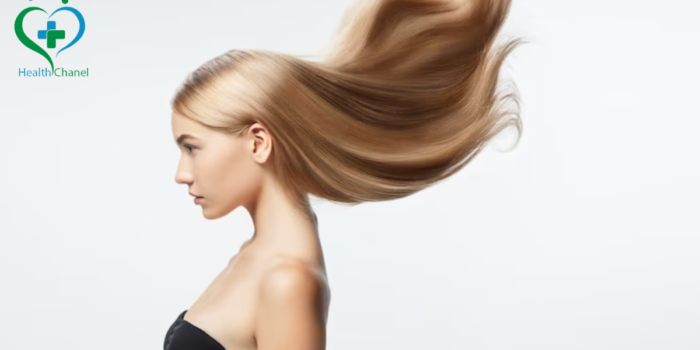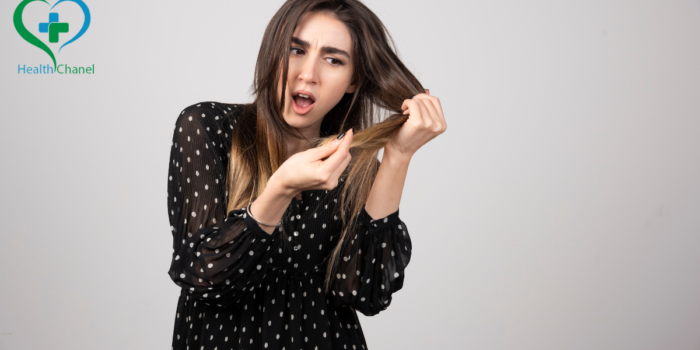Hair loss can feel devastating for any woman. Seeing your strands thin bit by bit…
Understanding Trichotillomania: Causes, Symptoms, and Treatment Options
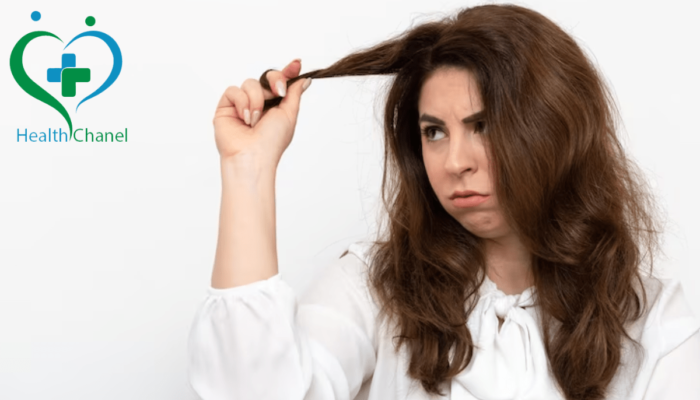
Have you or someone dear to you ever felt a strong urge to pull out hairs from your scalp, eyebrows, or other areas of your body? It’s possible that this condition you’re experiencing is known as Trichotillomania. Understanding it and exploring treatment and support options more efficiently may lead to improved care and consideration of support systems.
This article explores the causes, symptoms, and available treatments for trichotillomania – commonly known as a hair-pulling disorder, which impacts millions worldwide. Trichotillomania typically emerges during adolescence but can manifest earlier or even in adulthood. Experts suggest that its origins may stem from a combination of genetic, environmental, and psychological factors.
By gaining an understanding of the symptoms and triggers associated with trichotillomania, a clearer picture of this disorder emerges. Through this comprehension, effective treatment plans can be devised in order to manage and alleviate its impact. This article offers valuable insight and guidance for individuals seeking support, providing practical strategies for managing trichotillomania and enhancing overall well-being.
What is trichotillomania?
Trichotillomania more commonly referred to as hair-pulling disorder affects millions of people globally. Though often first noticed during adolescence or adulthood trichotillomania often first manifests before this milestone has even arrived often during early adolescence or childhood.
The hair-pulling disorder involves an irresistible urge to pull their locks out, leading to noticeable hair loss and distress. Controlling this habitual behavior often becomes challenging leading to feelings of:
- Guilt
- Shame
- Reduced self-esteem
Trichotillomania also known as an impulse control disorder is closely tied to obsessive-compulsive disorder (OCD). While pulling out hair may provide temporary comfort or satisfaction, soon afterward it usually leads to feelings of regret and frustration. Hair pulling may occur in specific patterns aimed at targeting certain areas or pulling specific kinds of strands such as coarse or curly strands.
Causes of trichotillomania
1. Genetic Predisposition
Research points towards genetic predisposition as being one possible contributor to the development of trichotillomania. Studies have shown higher rates among first-degree relatives than among general populations. Certain variations and changes to neurotransmitter pathways have been implicated as possible causes. This may point toward genetic susceptibility being at play.
2. Neurological Factors
A variety of neurological factors is believed to contribute to trichotillomania development. Dysregulation in certain brain regions such as the frontal cortex and basal ganglia has been seen among those diagnosed with the disorder; such regions play key roles in
- Impulse control
- Motor functions
- Emotional regulation
- Suggesting neurobiological abnormalities may lie at its heart
3. Psychological and Emotional Triggers
Psychological and emotional triggers play an integral part in trichotillomania. Stress, anxiety, boredom, frustration, or tension may increase an urge to pull out hair. Negative emotions coupled with difficulty managing stress may prompt individuals to engage in hair-pulling behavior as a means to cope and gain some sense of control through hair-pulling behavior.
4. Coping Mechanisms and Stress Relief Solutions
Trichotillomania can be seen as an ineffective response to stress. Individuals may turn to hair pulling as a means to alleviate tension or manage overwhelming emotions, reinforcing this maladaptive behavior and making it harder to break it out of its cycle.
5. Cognitive Factors
Mismatched thinking patterns and beliefs may play a part in trichotillomania, leading to negative self-perceptions or perfectionistic tendencies that instigate increased anxiety levels that may trigger hair-pulling behaviors as an adaptive defense mechanism. Cognitive-behavioral therapy (CBT) could provide valuable assistance by changing maladaptive thoughts into productive coping mechanisms with positive results.
6. Comorbidity with Other Disorders
Trichotillomania often coexists with other mental health conditions. Conditions like anxiety disorders, depression, obsessive-compulsive disorder (OCD), body dysmorphic disorder, and eating disorders may increase the risk of trichotillomania or worsen its symptoms; an in-depth evaluation should be performed to address all comorbidities and provide effective treatments.
7. Environmental Influences
Environmental factors, including family dynamics and upbringing, may play a part in the onset of trichotillomania. Childhood trauma such as neglect or abuse may deplete emotional well-being while increasing hair-pulling behaviors as an adaptive coping strategy; providing a nurturing, supportive environment is vital in both treating trichotillomania as well as preventing it.
8. Sociocultural Factors
A variety of sociocultural influences can contribute to trichotillomania’s development; such as pressure to conform with society’s beauty standards or media portrayals that depict unrealistic images of physical appearance. Peer pressure may lead to body dissatisfaction that triggers hair-pulling behaviors; understanding and challenging these expectations can be key components of treatment.
9. Developmental Factors
Trichotillomania typically first manifests during childhood or adolescence. Without effective emotion regulation skills or difficulties adapting to physical changes during puberty, individuals become vulnerable to developing trichotillomania. Early intervention and support to develop healthy coping mechanisms is crucial in order to minimize its long-term impacts on health and well-being.
10. Learned Behavior
Trichotillomania can be learned through observation or imitation. Children may observe family members or peers engaging in hair-pulling behaviors and imitate these actions themselves, with relief experienced after hair-pulling strengthening the behavior further and making it hard to break free of its cycle.
11. Trauma as a Cause
Traumatic experiences such as physical or sexual abuse may play a part in the development of trichotillomania, with hair pulling used as a way to cope with or dissociate from painful memories or feelings associated with traumatized experiences. Trauma-informed approaches that address this source are critical when treating this disorder.
12. Media and Social Pressure Impact Analysis
Media representations and social pressure can have a devastating effect on body image and self-esteem, potentially contributing to trichotillomania. Representing unrealistic beauty ideals, constant exposure to images of perfect appearances, and placing an emphasis on physical attractiveness may leave many feeling inadequate and lead them to engage in hair-pulling behaviors.
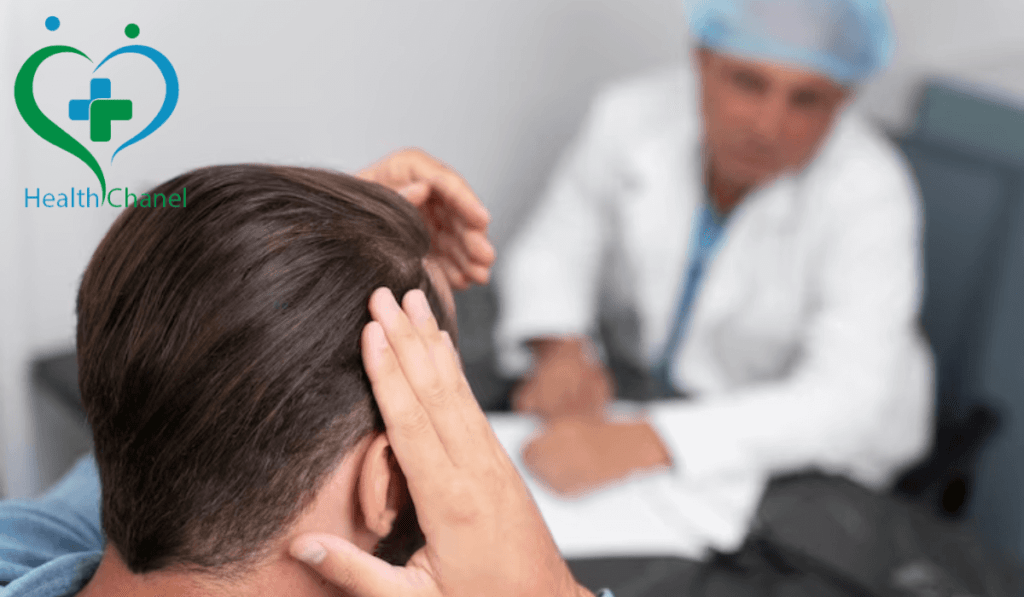
Signs and Symptoms of Trichotillomania
Trichotillomania symptoms Trichotillomania can be identified through multiple signs and symptoms that vary in intensity and frequency between individuals, making diagnosis often challenging. Here are some indicators of Trichotillomania:
1. Repetitive Hair Pulling
Trichotillomania can be identified by an irresistible urge to pull out hair from the scalp, eyebrows, eyelashes, or other parts of the body on an ongoing or repeated basis. This behavior often goes hand in hand with tension or anxiety levels rising as one performs this pulling behavior repeatedly.
2. Tension or Relief Prior to Pulling
Many individuals with trichotillomania experience a build-up of tension or an increase in anxiety just before pulling their hair. Pulling can provide temporary relief or satisfaction that contributes to its addictive nature.
3. Visible Hair Loss
Trichotillomania’s most prominent side effect is visible hair loss. Patches of thinned-out or even complete bald spots may become evident on the scalp, eyebrows, or eyelashes – in extreme cases leading to full baldness in specific areas of the scalp or face.
4. Patchy or Bald Areas
Trichotillomania can cause irregular hair loss patterns that manifest themselves through patchy or bald areas on the scalp, with various lengths of hair due to ongoing pulling behaviors.
5. Emotional Distress
People living with trichotillomania often experience emotional distress due to their hair-pulling habit. Feelings such as
- Shame
- Embarrassment
- Frustration
- Guilt
These are common when trying to control or stop pulling.
6. Concealing of Behavior
Many individuals suffering from trichotillomania take steps to conceal their hair-pulling behavior, often covering themselves up with scarves, hats or wigs to hide the visible effects of hair loss which may negatively impact both their self-esteem and social interactions.
7. Social and Occupational Impairments
Trichotillomania can severely impair an individual’s social and occupational functioning. The distress caused by this condition may cause them to withdraw from social activities, avoid certain situations and experience difficulty maintaining relationships or performing at work or school.
8. Ritualistic Behaviors
Some individuals with trichotillomania engage in ritualistic behaviors prior to or during hair pulling. These rituals may include specific patterns of pulling, using certain tools, or following certain routines – each providing some sense of control or comfort for those suffering.
9. Sensory Pleasure
Hair pulling in trichotillomania may provide a form of sensory pleasure or satisfaction. Pulling the hair may offer unique tactile sensations or relieve tension, leading to temporary feelings of pleasure.
10. Chewing or Ingesting Pulled Hair
Individuals suffering from trichotillomania may chew or ingest their hair after pulling, a practice known as trichology that may have serious adverse consequences on their digestive systems – leading to hairballs or even medical complications.
11. Regret or Guilt
After engaging in hair-pulling behavior, individuals with trichotillomania often express regret or guilt over what has occurred and may find it challenging to resist their urges and put an end to this behavior.
12. Hair Regrowth
Although pulled out due to trichotillomania hair has the ability to grow back, repeated and prolonged pulling may damage follicles resulting in slower or impaired regrowth.
13. Increased Hair Pulling in Stressful Situations
Stressful situations or emotional states can trigger an increase in hair-pulling episodes for individuals with trichotillomania. Pulling hair may serve as a temporary coping mechanism or a way to ease anxiety temporarily.
14. Co-existing Conditions
Trichotillomania frequently co-occurs with other mental health conditions, including anxiety disorders, depression, OCD, or body dysmorphic disorder (BDD). Therefore, treating any associated underlying conditions is key for comprehensive therapy.
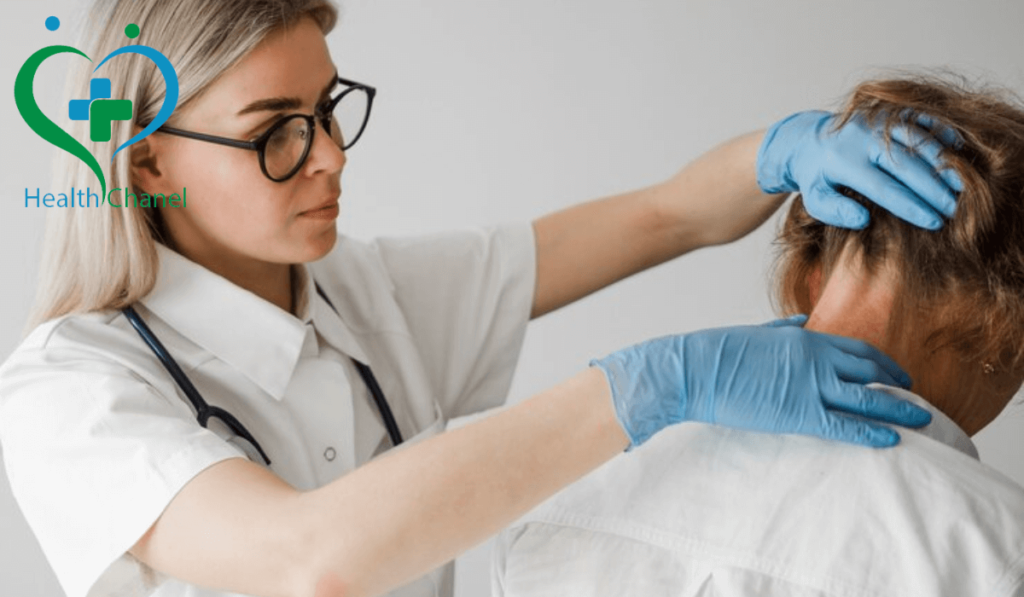
Diagnosing Trichotillomania
Mental health experts rely on the Diagnostic and Statistical Manual of Mental Disorders issued by the American Psychiatric Association to diagnose the condition of trichotillomania. This manual has specific criteria that must be met in order to acknowledge this condition.
Diagnostic Criteria for Trichotillomania
The DSM-5 provides essential criteria for diagnosing trichotillomania:
Repetitive hair-pulling results in hair loss. Repeated attempts are made to reduce or stop it. However, still, there may be significant distress or impairment caused by hair pulling in social, occupational, or other important aspects of functioning.
Hair pulling does not indicate an underlying medical condition or substance abuse issue.
Distinguishing Trichotillomania from Other Disorders
Trichotillomania shares similarities with various disorders, making its diagnosis complex. It’s essential to differentiate trichotillomania from conditions such as:
1. Obsessive-Compulsive Disorder (OCD)
Trichotillomania and OCD both fall within the realm of obsessive-compulsive disorders; however, OCD typically involves repetitive thoughts and rituals while trichotillomania involves hair-pulling behaviors specifically.
2. Body Dysmorphic Disorder (BDD)
BDD involves an obsession with perceived flaws in appearance. Although hair pulling may be one symptom, the primary focus should remain on body image concerns rather than simply pulling one’s own locks out.
3. Dermatillomania (Skin Picking Disorder)
Dermatillomania, commonly referred to as skin-picking disorder, involves compulsively picking at skin in an attempt to cause tissue damage. While hair pulling and skin picking often co-occur, they represent different conditions with specific diagnostic criteria.
Assessing Trichotillomania
Mental health professionals use various assessment methods to accurately evaluate trichotillomania. These assessments help mental health practitioners gain an accurate assessment and formulate an appropriate treatment plan.
1. Clinical Interviews
Clinical interviews involve an intensive dialogue between an individual and a mental health professional in which both parties investigate symptoms, history, triggers, and contributing factors for trichotillomania.
2. Self-Report Measures
Questionnaires and scales designed to assess hair-pulling behaviors provide invaluable insight into an individual’s hair-pulling habit, severity of symptoms, and associated emotional distress. One such self-report tool is Trichotillomania Severity Scale (TSS).
3. Diagnostic Tools and Questionnaires (DT&Qs)
Specialized tools and questionnaires are available to aid mental health professionals in diagnosing trichotillomania. These assessments allow them to evaluate the presence and severity of hair-pulling behaviors over time as well as to track progress while tracking psychological factors associated with the
Securing Professional Help
If you suspect you or someone close to you is suffering from trichotillomania, seeking professional assistance immediately is critical. Mental health specialists such as psychologists and psychiatrists specialize in diagnosing and treating trichotillomania.
1. Therapy Options
Cognitive-behavioral therapy (CBT) is the preferred therapeutic method for trichotillomania treatment. CBT assists individuals in identifying triggers, developing coping strategies, and gradually decreasing hair-pulling behavior. Acceptance and Commitment Therapy (ACT) and Habit Reversal Training (HRT) may also prove to be useful treatment modalities.
2. Medication
In some instances, medication may be recommended to help manage trichotillomania symptoms. Studies have demonstrated promising results from selective serotonin reuptake inhibitors (SSRIs), such as fluoxetine or sertraline, in decreasing hair-pulling urges and improving overall well-being. Medication should always be administered and overseen by a qualified healthcare provider.

Trichotillomania Treatment Options
1. Psychotherapy
Psychotherapy (also referred to as talk therapy) is often recommended as an effective means of treating trichotillomania. It seeks to help individuals understand and manage the emotions, triggers, and behaviors associated with hair pulling – some forms of psychotherapy have demonstrated effectiveness:
2. Cognitive-Behavioral Therapy (CBT)
CBT is an established therapeutic approach used to address various mental health conditions, including trichotillomania. CBT techniques such as cognitive restructuring, exposure and response prevention, and relaxation training may help individuals build healthier coping mechanisms and break free of their hair-pulling behavior.
3. Habit Reversal Training (HRT)
HRT is a type of behavioral therapy intended to change hair-pulling behaviors into healthier alternatives, through increasing awareness, identifying triggers, and developing responses incompatible with pulling. Muscle relaxation training, competing response training, and social support all form integral parts of HRT therapy.
4. Acceptance and Commitment Therapy (ACT)
ACT is a mindfulness-based therapy, focused on accepting uncomfortable thoughts and feelings without judgment while making behavioral changes consistent with personal values. When applied to trichotillomania, ACT helps individuals develop psychological flexibility and resilience; making it easier to resist urges to pull hair and engage in more fulfilling activities.
5. Medication
Individuals suffering from trichotillomania could find taking medication beneficial in managing their symptoms. Although there is no one-size-fits-all remedy available to address trichotillomania specifically, certain SSRIs or anti-anxiety medicines might help decrease hair-pulling behavior; speak to your healthcare provider if this option may be suitable for you.
6. Support Groups
Joining a support group can give individuals with trichotillomania an invaluable sense of community and understanding, offering a safe space to share experiences, discuss coping strategies, and receive encouragement from those experiencing similar struggles. Online groups, forums, and local community organizations all can be useful resources when searching for support.
7. Alternative Therapies
Alternative therapies may supplement traditional treatments in managing trichotillomania symptoms. While their success varies according to each person, some alternative therapies have demonstrated promise in decreasing and related hair-pulling behaviors. It’s important to remember that alternative approaches should only ever be utilized alongside evidence-based remedies; here are a few to keep in mind:
7.1. Mindfulness and Meditation.
Meditation and mindfulness practices can help individuals increase awareness of their hair-pulling urges and develop the capacity to respond without acting on them. Furthermore, such practices promote relaxation, self-compassion, and emotional regulation – qualities that may prove invaluable in managing trichotillomania symptoms.
7.2. Aromatherapy
Aromatherapy utilizes essential oils to promote physical and emotional relaxation and well-being. Certain scents, like lavender or chamomile, have long been recognized for their calming effects; including it as part of your self-care routine can potentially lower stress and anxiety – two common triggers for hair pulling.
7.3. Acupuncture
Acupuncture is an ancient Chinese medical practice involving inserting thin needles at various points on the body to reduce anxiety and improve overall well-being, potentially providing indirect help with managing trichotillomania symptoms. More research needs to be conducted in this regard before conclusive answers can be given on its efficacy against this disorder.
7.4. Lifestyle Changes
Lifestyle changes may also help manage trichotillomania effectively and here are a few suggestions:
- Keep a regular sleep schedule to maximize physical and mental wellness.
- Engage in regular physical exercise to reduce stress levels and boost endorphin levels, and utilize stress management techniques such as deep breathing, yoga, or journaling for an overall positive effect on health.
- Locate and avoid triggers that lead to hair-pulling, such as boredom or anxiety-inducing situations.
- Seek support from loved ones and communicate openly about the condition.
FAQs
1. What age typically marks the onset of Trichotillomania?
It can strike at any age, although most often during adolescence or early adulthood. Children and older adults can also exhibit symptoms of this disorder.
2. Can Trichotillomania Be Treated?
Trichotillomania may not have an absolute cure; however, with proper support and treatment plans individuals can learn how to effectively control and reduce their hair-pulling behaviors, leading to improved quality of life.
3. Are there any risks associated with Trichotillomania?
Yes, it leads to many serious consequences, including skin infections, hair loss, emotional distress, and low self-esteem. Early professional help may help avoid or mitigate some of these side effects.
4. Trichotillomania is an uncommon condition?
Trichotillomania may seem rare compared to other mental health conditions, but it is more widespread than commonly assumed. According to estimates, approximately one to two percent of the population will experience some form of trichotillomania at some point during their lives.
5. Can Trichotillomania Be Passed Down Through Families?
While the genetic components influencing trichotillomania remain unknown, research indicates a hereditary component to this disorder. Individuals who come from families that have had a history of trichotillomania may be more prone to develop it themselves.
6. How can I assist someone suffering from trichotillomania?
If you know someone with trichotillomania, offering support and offering empathy can make a substantial difference. Encourage them to seek professional assistance and be there as someone to listen and offer encouragement throughout their journey.
Conclusion
Trichotillomania is an emotionally and psychologically distressful condition that can significantly impair its victims. By understanding its causes, symptoms, and treatment options available, individuals with trichotillomania can take steps toward managing and conquering it – professional guidance as well as finding supportive communities can provide invaluable help in taking back control and living a fulfilling life.
Also, Read Other Articles:
Does Creatine Cause Hair Loss? We Review the Evidence
Best Hair Loss Treatment for Female|Female Pattern Baldness
Which vitamin deficiency causes hair loss | Vitamin B12 & D Deficiency
How to regain hair loss from stress | Symptoms, Vitamins, and Natural treatments
Postpartum Hair Loss | Reasons, Vitamins, Breastfeeding, Treatment.
